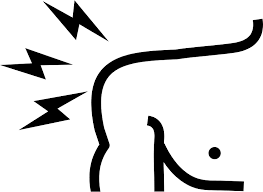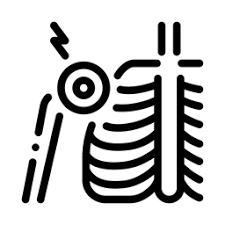Shoulder Replacement
Shoulder Replacement
Although shoulder joint replacement is less common than knee or hip replacement, it is just as successful in relieving joint pain.
If nonsurgical treatments like medications and activity changes are no longer helpful for relieving pain, you may want to consider shoulder joint replacement surgery. Joint replacement surgery is a safe and effective procedure to relieve pain and help you resume everyday activities.

Types of shoulder replacement surgery
The nature of your injury or pain will help determine which type of surgery is best for you. Your doctor will recommend the safest solution that preserves as many of your natural body parts as possible and improves your quality of life after surgery.
Partial shoulder replacement
is also known as hemiarthroplasty. "Hemi" means partial. This procedure replaces either the ball or the socket of the joint with an artificial part. Which part is replaced depends on where the damage in your joint is found. The most common partial shoulder replacement is for the humeral head (top of the humerus bone).
Anatomic total shoulder replacement (traditional or conventional)
the damaged parts of the shoulder (portions of the ball-and-socket joint) are removed and replaced with artificial parts. These parts are typically made of a combination of metals, such as titanium and cobalt chrome, and medical grade plastics. This surgery is effective for people with a functional rotator cuff. It can help those who have osteoarthritis or other conditions that damage the joint.
Reverse total shoulder replacement
the damaged ball-and-socket joint surfaces are removed. Artificial parts are then used to replace them. However, the location of these parts is reversed. The original socket is replaced with a ball and the humeral head is replaced with a socket. This orientation provides more stability in cases where rotator cuff and other soft tissues are severely damaged or weakened. It relies primarily on the deltoid muscle to control the motion of the joint. This is the most common type of shoulder replacement surgery performed.
What conditions could require shoulder replacement surgery?
There are several conditions that may create a need for a partial or full shoulder arthroplasty. These conditions range from degenerative (wear and tear conditions) to acute traumatic injuries.

Osteoarthritis
an age-related condition caused by years of wear and tear on the cartilage that cushions the shoulder bones.

Avascular necrosis
A condition that causes a loss of blood supply to the bones that can lead to joint damage and pain.

Severe fractures
damage and breaks to the upper arm bone. This can lead to interruption of blood flow, stiffness, pain, weakness and loss of function.

Rotator cuff tear
a severe tear in the muscles and tendons in the shoulder. This can cause pain and weakness, and in some cases, it may lead to arthritis (rotator cuff arthropathy) or damage to the shoulder joint cartilage.

Rheumatoid arthritis
a disease that causes inflammation and thickening of the shoulder joint, which damages cartilage. This can lead to pain and loss of motion.

Post-traumatic arthritis
a form of osteoarthritis that develops rapidly in a joint due to an injury, such as a bone fracture or dislocation. The damage caused by the injury triggers the onset of arthritis in the affected joint.
